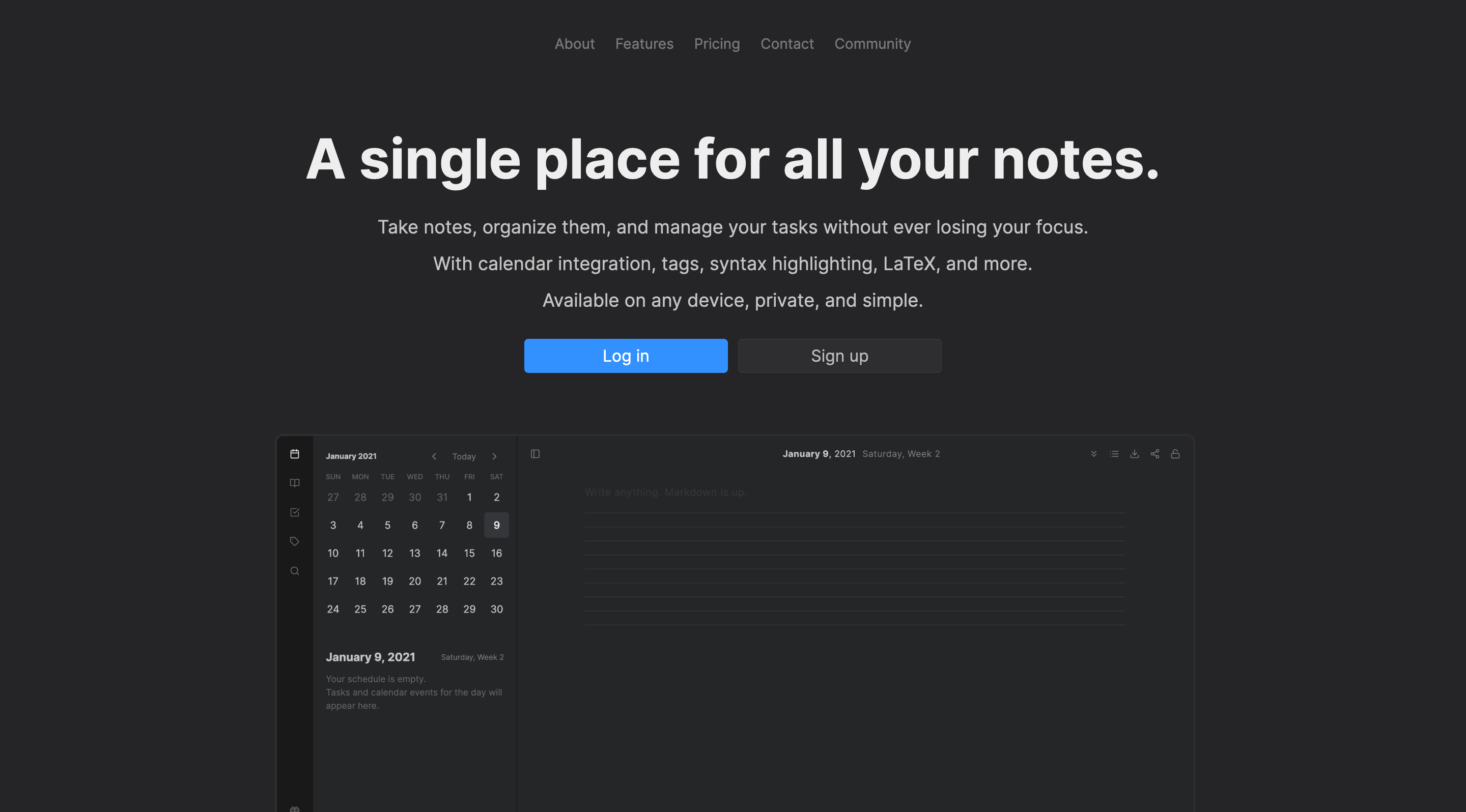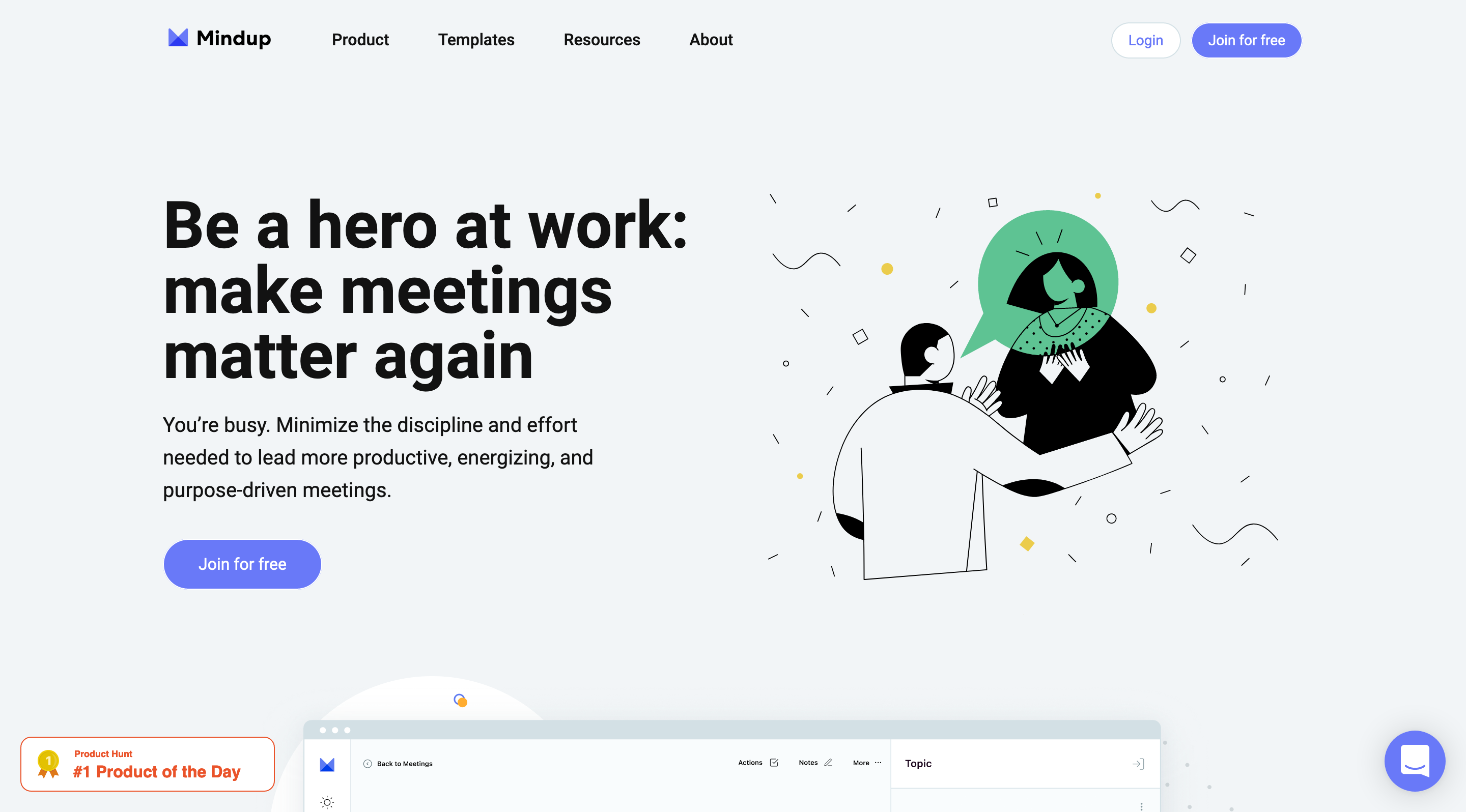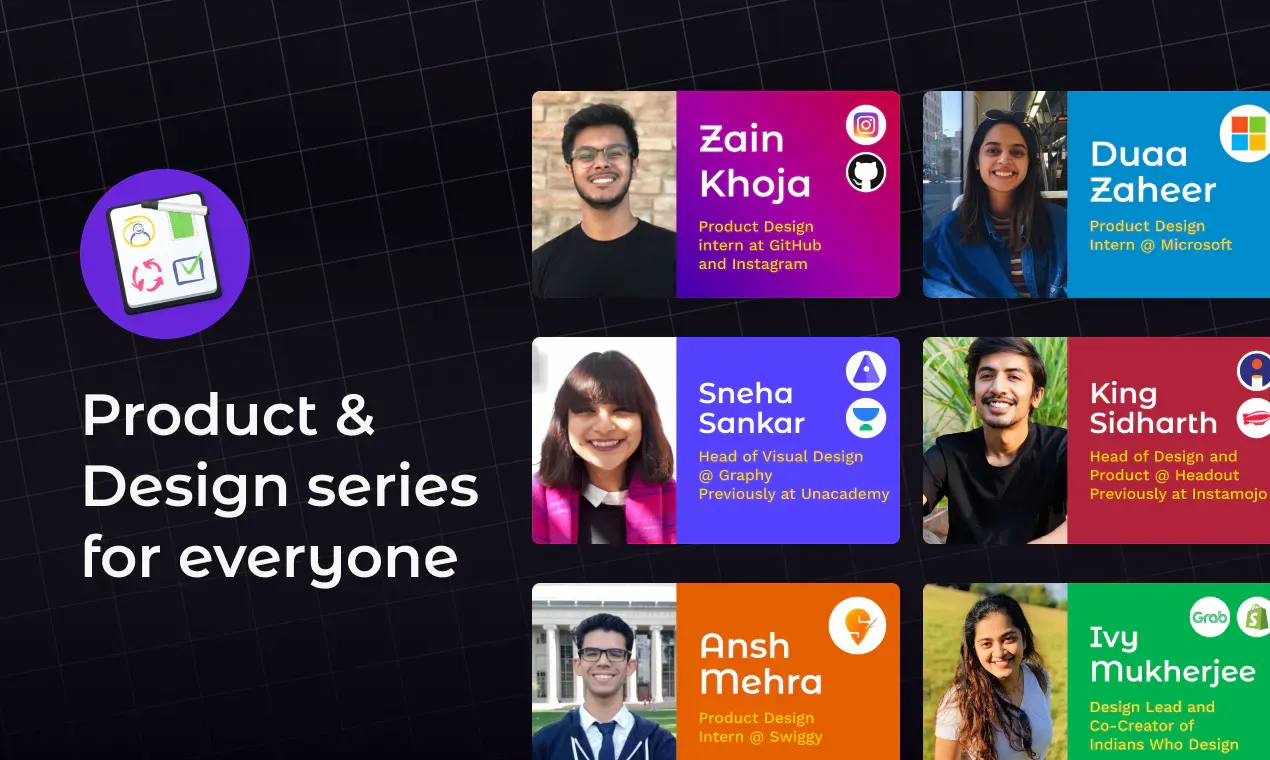A single place for all your notes & Use ideas as tools not truths
In this week's issue of Creativerly: Your productivity operating system, make meetings matter again, how constraints can inspire creative thinking, and a lot more.

You are reading Creativerly, the weekly digest about creativity and productivity-boosting tools and resources, combined with useful insights, articles, and findings from the fields of design and tech. The newsletter built for the creative community.
Hey and welcome to issue 105 👋
Over the last couple weeks, I had some ongoing domain, HTTPS, and server issues with my website, hosted at DigitalOcean and using Ghost. Since I have only some basic knowledge regarding managing servers and solving issues in that area, it was quite a hassle to dig through countless guides and tutorials online. There would have been always the option to go for Ghost Pro and their managed hosting, where you do not need to worry about those things since Ghost is taking care of it. For an indie publisher, that is writing and curating a weekly newsletter as a hobby, side-project, and passion, it is kind of hard to justify paying $29 per month for Ghost Pro, at least it was for me. Therefore I decided to self-host it, being aware of the fact that I will sometimes need to fix stuff on my own.
When you want to start your own newsletter, think of that first. Do you want a super easy setup, which lets you start straight away without any hassle, but lacks some kind of features or do you want to create a completely customized tech stack that exactly works to your needs? In general, it does not matter which ESP you decide to use, as most of them have a pretty similar feature set. But as your audience grow, you might want to try out new things, bring in new features and content for your audience, and exactly at this point you might want to reconsider your decision.
For me personally, Substack was great to simply start creating and publishing content. But as my audience grew, I wanted to have a dedicated landing page, and more control over the content I create. Therefore, I decided to leave Substack, and settle on Ghost. While this move worked out for me, it does not mean that it will also work out for you. Take your time to evaluate which services and tools might work in your favor and do not rush any decisions.
If you have recommendations or feedback, drop me an email or a tweet. For now, enjoy the newsletter! 🥰
Apps, Software, Tools

Washi →
I always get excited when I find out about a new note-taking tool. Washi is a beautifully designed note-taking tool, currently in early access, so if you want to try it out first make sure to sign up for the waitlist. Washi is the one place for all your notes. It has a calendar integration (basically like NotePlan), tags, syntax highlighting, LaTeX, markdown support, and more. If you want to write as fast as possible, as clear as possible, then markdown is the only answer. When I see a note-taking tool, that has markdown support, I immediately get excited about it. Washi supports not only markdown but also Github-flavored additions. If you like to keep your notes and tasks all in one place, organized and structured, you can do exactly that with Washi. Keep your focus during your note-taking process, and quickly jot down your tasks and todo's whenever something comes to your mind. It does not stop there: if you like to write journals, Washi also got you covered, since you can switch between two different writing modes, agenda, and notebook. In the agenda, every note is tied to a date, and you can see your daily schedule straight from your calendar, create quick meeting notes, and check your tasks. The notebook is the place for standalone, free notes for your ideas, shopping lists, larger projects, and anything you want to keep written down. Super intuitive! Washi is the perfect fit for engineers, students, journalists, and every creative mind who is serious about note-taking. As mentioned earlier, you can sign up for the waiting list right now to receive access and give Washi an early test drive.

Routine →
The productivity tool space is an ever-growing one, and it is always exciting to see tools with a new approach. Routine recently caught my eye, as it entitles itself as a productivity operating system, a centralized place to collect, organize and act upon your professional and personal tasks. There are loads of tools for calendars, email, tasks, notes, meetings, and so on, all of them compete for the user’s attention and rarely interconnect to make her life easier. Routine lets you define your, you guessed it right, routine. Structure your day, week or month, define your schedule by creating slots representing a type of work. Time-blocking is an incredibly useful productivity technique, and one of the most popular advocates of this technique is none other than Cal Newport, author of Deep Work. With Routine you can quickly turn anything into a task, no matter if it is a conversation on Slack, WhatsApp, Messenger etc, a mail from Gmail or a Web page, or else. All of that lands straight into Routine's Inbox, where you can come back to it process your inbox of inbound messages: emails, chats, and tasks alike. Besides that, Routine is a gorgeously designed tool and I can not wait to give it a try.

Mindup →
Meetings done wrong can block your productivity, but meetings done right can boost your productivity and energize your workflow. Mindup wants to help you make meetings matter again. Minimize the discipline and effort needed to lead more productive, energizing, and purpose-driven meetings. With Mindup you can create a collaborative agenda to help your team stay focused and avoid wasted time. So, how can you actually make meetings matter again while using Mindup? Prepare ahead of time: with Mindup you can share topics and comments to help your team come more prepared for meetings that lead to results. Hold everyone accountable: Mindup gives you the possibility to simply add action items and assign them to someone as your mutual conversation continues. Review past decisions: With Mindup you will never forget what got discussed during a meeting, come back to your meeting notes long after the meeting is over to revisit what was decided. Mindup helps you start straight away with dozens of interactive agenda templates across a variety of topics to lead more focused meetings. Mindup is the one tool you want to use if you want to boost your meetings and skyrocket your productivity.

Quant UX →
Last week I wrote about Penpot, an open-source full-fledged user interface design tool. And this week, I want to present you with another open-source tool, but this time for prototyping and user research. Quant UX lets you create prototypes and understand how your audience interacts with them. It is a free research, usability & UI prototyping/wireframing tool to quickly test your design and analyze interactive prototypes. Our visual analysis makes it easy for you to find and quickly fix pain points in your UI design. With Quant UX you can create prototypes literally in minutes, simply, without writing a single line of code. To bring your prototypes to life, Quant UX is offering an elements library with a wide range of ready-to-use UI elements for your prototype. On top of that, you can also collaborate with your team within Quant UX, simply send a link to your prototype and work together with others. When you are done with your prototypes, you surely want to test them with real users. Quant UX offers exactly that: All prototypes are fully functional. They behave like a real application. You can enter data, interact with UI elements and navigate between screens. After the test, the analysis phase starts: Once a test user uses your prototype, their interactions are recorded and analyzed. Quant UX wins all information and Key Performance Indicators (KPI) and prepares them graphically. Quant UX is an incredibly powerful tool, with a wide-range of features, and all of that is free and open-source. You hardly find such a great product for that specific use case.
Useful Resource

Whiteboard.fm →
As a product designer myself, I deeply enjoy it to read through interviews with other designers, to get a glimpse into their work, day-to-day life, and the tools they use. Besides reading interviews, listening to them through podcasts is also pure joy. Therefore, I am super happy to found out about this week's featured resource, Whiteboard.fm, the product & design interview series for everyone, that lets you explore the stories, processes & projects of interesting and upcoming folks in the industry. The podcast is available on all major platforms, Spotify, Youtube, Google Podcasts, and Apple Podcasts. There are already 30 interviews in their archive, with folks from companies like Microsoft, Google, Uber, Facebook, LinkedIn, and others. Definitely give it a listen!
Mental Wealth
➢ Use ideas as tools not truths – ““The dangerous man is the one who has only one idea because then he'll fight and die for it." -Francis Crick This quote made me think about the dangers of believing in ideas as truths. Most things that matter in life are messy. As Feynman once said: "It's because somebody knows something about it that we can't talk about physics. It's the things that nobody knows anything about that we can discuss. We can talk about the weather; we can talk about social problems; we can talk about psychology; we can talk about international finance--gold transfers we can't talk about because those are understood--so it's the subject that nobody knows anything about that we can all talk about!" -Richard Feynman. You will encounter conflicting advice during your whole life. Choosing an Idea and following it blindly will cause you many problems. Let's start with an example: You will find a lot of advice in productivity about only doing good enough or "Done is better than perfect" etc. The concept is that perfectionism is a fool's errand and can freeze you. So, doing something is better than doing nothing.”
➢ How constraints can inspire creative thinking – “A number of big brands have recently subjected their logos and icons to controversial makeovers (we're looking at you Google). With most recent redesigns adopting the flat design trend, you'd expect things to look a little, well, flat. But, according to one designer, brands are now beginning to face a very different problem. Apparently, the problem lies in the cognitive load facing users when looking at the apps laid out next to each other in situ. With oh-so-similar rainbow-fueled colour palettes and wacky uses of shape, are icons in danger of becoming too much to process? See the tweet below, and compare with our pick of the iOS app icon designs. But when any and all options are available to you, it can lead to paralysis. It’s the tyranny of the blank page—too many choices can stop you from getting started. Or they can cause you to play it safe, leaning on ideas and techniques similar to what has worked before.”
➢ Journalism says it’s a service, but it doesn’t think like one – “Several months ago, I was part of a gathering for solutions journalists from around the world. The term “solutions journalism” sounds positive, but this form of media isn’t focused on feel-good stories or “puff” pieces. Solutions stories look for what people are doing about a problem, and evaluate whether these attempted solutions are actually working, for whom, and why. At the summit, I spent one lunch session chatting with a writer who is building a health and parenting newsletter for her regional readership. “I’m creating something I really believe has value,” she told me. “But — does it? I can’t really tell.””
➢ Love and Magic: How Love Powers Creativity – “Love and creativity go hand in hand. That’s why so many poems, songs, novels, and movies are centered around love. That’s why creative people are so often portrayed as “hopeless romantics” (it may be a stereotype, but there’s truth in a lot of stereotypes). But why is it that love and creativity have such a close relationship? How does love inspire the magic of creativity? And how can we leverage the love that we already have in order to benefit and power our creative efforts? Love is hopeful. When you love someone, you hope that they will feel the same way about you. You hope for a bright future with them. You hope that everything will work out for the two of you. Hope and love are closely connected.”
Last week's quick bits
- New malware found on 30,000 Macs has security pros stumped
- Spotify says it's letting employees work from anywhere, while still paying San Francisco and New York salaries
- WhatsApp to go ahead with changes despite backlash
Twitter thoughts
You wanna be a writer?
— Shane Breslin (@shanebreslin) February 16, 2021
Write.
Till next time! 👋
Support: Do you have a friend who is looking for inspiration, news about design, and useful tools and apps? Forward this newsletter to a friend or simply share this issue and show some support. You can also show some love by simply clicking the button down below and keep this newsletter a sustainable side-project by buying me a coffee. ☕️ 🥰

Disclaimer: My posts may contain affiliate links. If you buy something through one of those links you won't pay a penny more, but I'll get a small commission, which supports this blog and also my side-projects. So consider buying something through my links. Thank you!



Discussion